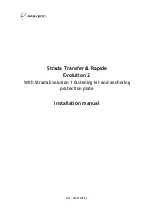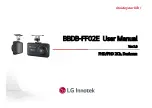
Description of the data path
STINGRAY Technical Manual
V4.4.2
168
Encapsulated Update (begin/end)
The
Encapsulated Update (begin/end)
has the following characteristics:
•
Host will set a parameter update begin flag in the camera (UpdActive
Field in Register 0xF1000570, see
Table 155: Advanced register: Update
•
Host will send several parameters to the camera and then signalize end
by resetting the flag
•
All parameters will become active for the same next image
•
Dependent on timing mode, the camera
– (standard Update): uses the previous parameters until the update
flag is reset
– (
Quick Format Change Mode
): waits until the update flag is reset.
In the
Encapsulated Update (begin/end)
the exact sequence is:
1.
Parameter update begin (advanced feature register)
2.
Standard IIDC register update (1..N register) (standard feature register)
3.
Parameter update end (advanced feature register)
Camera timing behavior is like this:
If after end of time-out (10 seconds after
Quick Format Change Mode
) no
parameter update end
is sent, all changes will become valid.
A new write event of
parameter update begin
starts time-out again.
Parameter-List Update
In the
Parameter-List Update
mode a complete list with IIDC addresses and
values of up to 64 parameters is sent to the camera.
Fast Parameter Update Timing
Quick Format Change Mode
After the parameter update stop command all
changed parameters are valid for the available
next image. Frame rate is constant.
After the parameter update start command a cur-
rent transfer is interrupted. A started exposure
will be interrupted until the next parameter
update stop command. Exposure of the next image
with new parameters is started.
There may be a gap between two succeeding
images but images are always transmitted com-
peletely.
Table 49:
Encapsulated Update (begin/end)
: comparison of standard timing and fast timing 2
















































